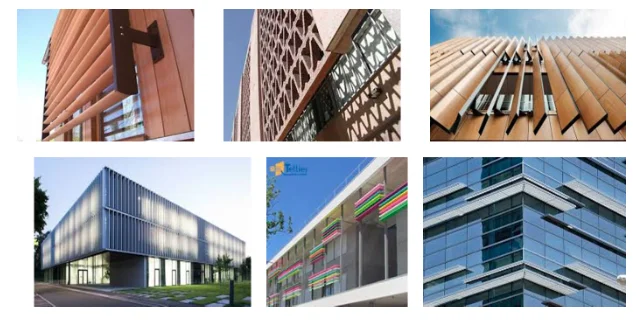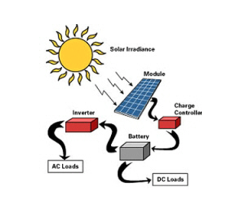Climate-Conscious Building Design
Introduction
Throughout history the provision of shelter from adverse external elements such as heat has been important to people and climate conscious building architectural designs have emerged (Etzion et al.,1997). All buildings constructed in oil-rich countries, in particular the middle east should maximise the use of the freely available solar power they benefit from. It can still feel somewhat counter-intuitive for any such effort to be made in a part of the world that is better known for oil and gas production.
The use of energy (in the form of electricity or gas) in public, commercial and industrial buildings represents a significant proportion of any country’s overall energy consumption. The literature on energy use and carbon emissions has grown intensely since the Rio Earth Summit (Summit, 1992, p. 125) and subsequent major conferences (Pérez-Lombard et al., 2008).
Barriers to change
There are potential benefits of designing energy efficient buildings at a national level which may include:
the reduced need for new electricity generation capacity investment,
reduced carbon emissions; and
new employment opportunities (Dubey et al, 2016).
There are many barriers to change including cultural, economic, technical and institutional (Alyousef and Abu-Ebid, 2012).

Cultural barriers
Low electricity prices, which are furthermore, heavily discounted compared with the cost of production in many GCC countries means that there is little incentive for households and organisations to invest in energy efficiency. Some end-users such as schools, government organisations and older houses are not set up with metering and either electricity is free or at a low subsidised fixed cost. This, along with incessant economic growth and affluence, have led to a prevalent culture of decadent usage of energy.
Economic barriers
The electricity generation systems are well established and modifying the delivery model of the electricity generating companies is not straightforward as it involves changes in existing government policies and the supporting legislation. Issues which would need to be addressed include tariff arrangements, significant CAPEX funding, planning issues for new facilities (which are often drawn out as a result of requirements for statutory consultations with a wide-range of stakeholders), anticipating market demand of potential end-users, dealings with the operation of the wholesale markets, scheduling of electricity production (in both long and short term) (Gabriel, 2008). There are also technical drivers which do limit the efficiency of the system in respect of battery storage and subsequent distribution of power.
Technical barriers
A significant technical issue is the large seasonal variation in electricity consumption in buildings. In the hot summer season, there is increasing energy demand for air conditioning, especially by the residential and commercial sectors.
Take a deeper dive into Hybrid Cars with our additional resources.
Institutional barriers
As major oil and gas producers, and their resultant low domestic energy prices, GCC countries lags behind many other developing nations in implementing energy efficiency strategies. This means there no central organisations accountable for energy efficiency at a nationwide level who is responsible for strategies and policies. This includes developing, publishing, monitoring and enforcing building codes which will be used by architects to focus their designs.
Although many national organisations deal with limited aspects of energy efficiency and have sophisticated skill sets, their work is often duplicated, their strategies and policies are limited in scope, and their activities are not coordinated. Ultimately, none of the initiatives taken by these bodies, or those taken by major commercial and industrial concerns, are enforceable outside their own organisations or have much effect on a national scale due to lack of transparency on the part of governmental organisations and commercial confidentiality concerns by commerce and industry.
Architectural Design Opportunities
Most research concludes that investments in residential buildings are by far the most cost effective, with payback periods of less than a year for low cost energy efficiency programs (Dubey et al, 2016). The opportunities include passive modifications to the building design and the inclusion of active systems.
Passive design opportunities
Ideally, energy conservation measures, such as building orientation and form, should be considered during the concept phase of a project. Other issues to consider are thermal buffer areas, fenestration shading and using heavyweight building materials. In an integrated design process, this is achieved through collaboration by all stakeholders in the project: client, engineer, architect, commissioning authority, facilities manager, operator and, where applicable, the general contractor.
In a temperate climate, such as the UK, a typical air-conditioned office building uses in the order of twice the energy of a naturally ventilated office building. In the middle east this increases to fifteen to twenty times (Pérez-Lombard et al., 2008). The requirement for air-conditioning can be reduced by the design of the building fabric. This includes limiting solar gains through the windows and using the thermal mass together with night-time ventilation to reduce peak temperatures.
Whilst larger windows increase daylight and arguably allow for a better view to the outside they do lead to greater solar heat transfer. Some of these effects can be mitigated by specifying appropriate glazing, installing curtains or window films, and fixed shading. Fixed shading, in the form of a brise soleil can add to the architectural aesthetics of a building (Loonen, et al., 2013) as illustrated in Figure 1.

Islamic architecture is renowned for its intricate and exquisite detail, but lace-like screens and lattices also reduce glare from the sun, provide shade, and help ventilate buildings by allowing breezes to waft through walls (Abdullahi and Embi, 2013).
Active systems
Active systems generally involved the inclusion of renewable sources of energy to reduce the demand from the public utility supplies. These could include geothermal and wind, but the main opportunity is using the sun.
Solar Hot Water
Solar water heating systems capture sunlight which is used to heat the water in pipework which serves the likes of showers and baths. As illustrated in Figure 2, the system components include the solar collector panels and accessories, including circulating pumps and a thermal regulator. These all need to placed somewhere and will affect the aesthetics of the building.

Photovoltaic
Solar thermal energy is considered to be virtually limitless renewable source of energy in the long-term, and is a very plentiful resource in the GCC (Hepbasli and Alsuhaibani, 2011).
Solar Voltaic Panels (SVP) comprise an assembly of smaller units (photovoltaic cells). These convert sunlight into electricity by means of photons (in the form of light particles), knocking electrons free from atoms and hence generating a flow of electricity.

A complete SVP system comprises of numerous components as illustrated in Figure 3, in addition to the photovoltaic cells, (which typically comprise of a plastic-coated element built into the building’s façade or into a louvre), batteries, connectors and cabling which transfer the DC generated electricity from the batteries to the invertors, which then convert the electricity to AC and an export system which exports surplus generated electricity to the grid (Boyd et al., 2014).

Conclusion
Energy usage can be reduced by reducing demand by means of good design, for both new builds and refurbishments, and managing end-user’s expectations and behaviours. It can still feel somewhat counter-intuitive for any such effort to be made in a part of the world that is better known for oil and gas production. Although the building fabric does have an important impact on the demand of for energy, the building services systems which are intended to make the internal environment safe and comfortable to live and work in, as well as providing the right environment for any processes or operations in internal spaces have a greater impact (Portman, 2014, p.37).
The challenge electricity-generating utilities face is the provision of secure and stable supplies of electricity to their customers. A major tool in meeting this challenge is energy efficiency; however, both challenges and barriers face multi-faceted cultural, economic, technical, and institutional problems, which may require mandatory and educational initiatives to overcome them, as well as institutional reorganisation.
References
- Abdullahi, Y. and Embi, M.R.B., 2013. Evolution of Islamic geometric patterns. Frontiers of Architectural Research, 2(2), pp.243-251.
- Alrashed, F. and Asif, M., 2012, August. Challenges facing the application of zero-energy homes in Saudi Arabia: Construction industry and user perspective. In Proceedings of the ZEMCH 2012 International Conference, Glasgow, UK (pp. 20-22).
- Alyousef, Y. and Abu-Ebid, M., 2012. Energy efficiency initiatives for Saudi Arabia on supply and demand sides. In Energy Efficiency-A Bridge to Low Carbon Economy. InTech.
- Boyd, P, Larsen, G D and Schweber, L (2014) Perspectives on the specification of Building Integrated Photovoltaic (BIPV) technology in construction projects. In:Raiden, A (Ed.) and Aboagye-Nimo, E (Ed.), Proceedings 30th Annual ARCOM Conference, 1-3 September 2014, Portsmouth, UK, Association of Researchers in Construction Management, 153–62.
- Burley, J and Pan, W (2010) Adoption of air source heat pumps for low carbon homes. In: Egbu, C (Ed.), Proceedings 26th Annual ARCOM Conference, 6-8 September 2010, Leeds, UK. Association of Researchers in Construction Management, Vol. 2, 1361–70.
- Etzion, Y., Pearlmutter, D., Erell, E. and Meir, I.A., 1997. Adaptive architecture: integrating low-energy technologies for climate control in the desert. Automation in Construction, 6(5-6), pp.417-425.
- Hepbasli, A. and Alsuhaibani, Z., 2011. A key review on present status and future directions of solar energy studies and applications in Saudi Arabia. Renewable and Sustainable Energy Reviews, 15(9), pp.5021-5050.
- Pérez-Lombard, L., Ortiz, J. and Pout, C., 2008. A review on buildings energy consumption information. Energy and buildings, 40(3), pp.394-398.
- Portman, J., 2014. Building Services Design Management. John Wiley & Sons.
- 24/7 Customer Support
- 100% Customer Satisfaction
- No Privacy Violation
- Quick Services
- Subject Experts



